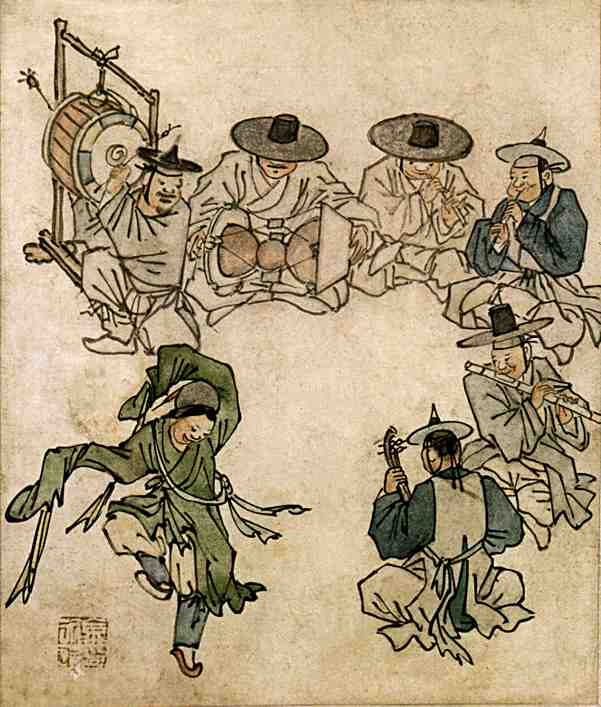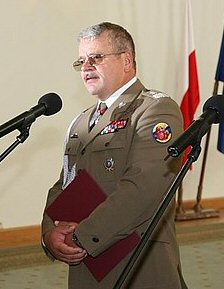|
Buk A, Busan
Buk or BUK may refer to: Places Czech Republic * Buk (Prachatice District), a municipality and village in the South Bohemian Region *Buk (Přerov District), a municipality and village in the Olomouc Region *Buk, a village and part of Jindřichův Hradec in the South Bohemian Region *Buk, a village and part of Milín in the Central Bohemian Region Poland *Buk, Greater Poland Voivodeship, a town in western Poland **Gmina Buk, the administrative unit *Buk, Podkarpackie Voivodeship, south-east Poland * Buk, Lesser Poland Voivodeship, south Poland *Buk, Goleniów County, West Pomeranian Voivodeship, North-west Poland *Buk, Police County, West Pomeranian Voivodeship, north-west Poland *Buk Góralski, a village in Kuyavian-Pomeranian Voivodeship, mid-northern Poland *Buk Pomorski, a village in Kuyavian-Pomeranian Voivodeship, mid-northern Poland Other places * Buk, Bulgaria, a village *Buk, Croatia, a village *Bük, a village in Hungary *Būk, a village in Iran *Paranesti, a village in ... [...More Info...] [...Related Items...] OR: [Wikipedia] [Google] [Baidu] |
Buk (Prachatice District)
Buk is a municipality and village in Prachatice District in the South Bohemian Region of the Czech Republic. It has about 300 inhabitants. Buk lies approximately west of Prachatice, west of České Budějovice, and south of Prague Prague ( ; ) is the capital and List of cities and towns in the Czech Republic, largest city of the Czech Republic and the historical capital of Bohemia. Prague, located on the Vltava River, has a population of about 1.4 million, while its P .... Administrative division Buk consists of three municipal parts (in brackets population according to the 2021 census): *Buk (231) *Včelná pod Boubínem (42) *Vyšovatka (23) Demographics References External links * Villages in Prachatice District Bohemian Forest {{SouthBohemia-geo-stub ... [...More Info...] [...Related Items...] OR: [Wikipedia] [Google] [Baidu] |
Buk, Croatia
Buk is a village in Požega-Slavonia County, Croatia Croatia, officially the Republic of Croatia, is a country in Central Europe, Central and Southeast Europe, on the coast of the Adriatic Sea. It borders Slovenia to the northwest, Hungary to the northeast, Serbia to the east, Bosnia and Herze .... The village is administered as a part of the City of Pleternica. According to national census of 2011, population of the village is 192. The village is connected by the D38 state road. Sources Populated places in Požega-Slavonia County {{PožegaSlavonia-geo-stub ... [...More Info...] [...Related Items...] OR: [Wikipedia] [Google] [Baidu] |
Bukawa Language
Bukawa (also known as Bukaua, Kawac, Bugawac, Gawac) is an Austronesian language of Papua New Guinea. Overview Bukawa is spoken by about 12,000 people (in 2011) on the coast of the Huon Gulf, Morobe Province, Papua New Guinea. The most common spelling of the name in both community and government usage is Bukawa (Eckermann 2007:1), even though it comes from the Yabem language, which served as a church and school lingua franca in the coastal areas around the Gulf for most of the 20th century. This ethnonym, which now designates Bukawa-speakers in general, derives from the name of a prominent village Bugawac (literally 'River Gawac', though no such river seems to exist) at Cape Arkona in the center of the north coast. ''Ethnologue'' notes that 40% of Bukawa speakers are monolingual (or perhaps were in 1978). This claim is hard to credit unless one discounts both Tok Pisin, the national language of Papua New Guinea, and Yabem, the local Lutheran mission lingua franca. The anthr ... [...More Info...] [...Related Items...] OR: [Wikipedia] [Google] [Baidu] |
Buk Missile System
The Buk (; "beech" (tree), ) is a family of self-propelled anti-aircraft weapon, self-propelled, medium-range surface-to-air missile systems developed by the Soviet Union and its successor state, the Russian Federation, and designed to counter cruise missiles, smart bombs and helicopter, rotary-wing aircraft, and unmanned aerial vehicles. In the Russian Anti-access/area denial, A2AD network, Buk is located below the S-200 missile system, S-200/S-300 missile system, 300/S-400 missile system, 400 systems and above the point defense Tor missile system, Tor and Pantsir missile system, Pantsir. A standard Buk battalion consists of a command vehicle, target acquisition radar (TAR) vehicle, six transporter erector launcher and radar (TELAR) vehicles and three transporter erector launcher (TEL) vehicles. A Buk missile battery consists of two TELAR (four missiles apiece) and one TEL vehicle, with six missiles for a full complement of 14 missiles. The Buk missile system is the successor ... [...More Info...] [...Related Items...] OR: [Wikipedia] [Google] [Baidu] |
BES-5
BES-5, also known as Bouk or Buk (), was a Soviet thermoelectric generator that was used to power 31 satellites in the US-A (RORSAT) project. The heat source was a uranium 235 fast fission nuclear reactor (FNR). Background Spacecraft nuclear reactors are typically fast reactors for the following reasons. First, normal moderator materials (carbon, water) add bulk and mass which is not desirable in a spacecraft. Second, for reasons of nucleonics the fuel must be highly enriched to have a lightweight critical mass (similar to small reactor designs on nuclear submarines). Note that some of the 238U (which is fertile and not fissile) will be converted to 239Pu during operation, and this is taken into consideration during the design and while estimating the power output and design life expectancy. Reactor design The design of the BES-5 FNR is such that a sub-critical assembly exists into which a rod of fissile material is inserted. Feedback and monitoring of the power level will ... [...More Info...] [...Related Items...] OR: [Wikipedia] [Google] [Baidu] |
Buk (drum)
The ''buk'' () is a traditional Korean drum. While the term ''buk'' is a native Korean word used as a generic term meaning "drum" (the Sino-Korean word being ''go''), it is most often used to refer to a shallow barrel-shaped drum, with a round wooden body that is covered on both ends with animal skin. Buk are categorized as ''hyeokbu'' (혁부, ) which are instruments made with leather, and has been used for '' jeongak'' (Korean court music) and folk music. History The buk used for court music are usually fixed with nails on the rims, while ones used for folk music are usually tied up with leather straps to form the shape. Performers in the court music usually beat their with ''bukchae'' (북채, a drum stick) on one hand or two hands together, while drummers in the folk music commonly beat their with it on their right hand as hitting the other side of the buk with their bare left hand. A while ago, even ''jong'' (종, bell) was referred to as "''soebuk''" (쇠북, metal d ... [...More Info...] [...Related Items...] OR: [Wikipedia] [Google] [Baidu] |
Tadeusz Buk
Tadeusz Buk (15 December 1960 – 10 April 2010) was a Polish military figure. He received numerous military and civil awards, including the Order of Polonia Restituta. Buk was born at Mójcza. He served as commander of the Polish Land Forces until his death in the 2010 Polish Air Force Tu-154 crash near Smolensk. Education Buk graduated from Juliusz Słowacki high school in Kielce. In 1984, he graduated from the Academy of Armed Forces Officers in Poznań. Military service * In 1984, he joined the 29th Medium Tank Regiment in Żagań and served in this unit until 1991. * In 1991, he enrolled at the Faculty of Land Forces of the National Defence Academy in Warsaw. * Between 1993 and 1995, he served, inter alia, in the 18th Battalion Airborne assault and 6 Air Assault Brigade. * From 1995 to 1998, he served in the 25th Air Cavalry Brigade in Tomaszów Mazowiecki. * In 1999, after completing the annual post-graduate command post in the USA, he was appointed deputy commander of ... [...More Info...] [...Related Items...] OR: [Wikipedia] [Google] [Baidu] |
Choe Buk
Choe Buk (; fl. 1712–1760), was a Korean painter of the late Joseon period. He used many art names including Samgijae, Hosaenggwan, Songjae, Giam, and Geogijae. Biography His childhood remains unknown, as well as the social status of his family. The ''Grove'' says 'floruit c. 1755–85'. He was known as a skilled landscape painter, but also drew portraits, flowers and animals. Legend tells of a powerful aristocrat that forced him to draw, but Choe refused to do so and as a result had one eye pierced, leading to the loss sight in that eye. He was known to have traveled in Japan and was known to Zheng Zhilong's family; painting an image of Zheng's wife and their son Koxinga. The original returned to Korea with Choe, but a copy was kept with the family and was later emulated by Bak Jega. His living situation became increasingly difficult, so he made a living by wandering around town and selling paintings. On the spot, he drew pictures at the request of others and re ... [...More Info...] [...Related Items...] OR: [Wikipedia] [Google] [Baidu] |
Buk District (other)
Buk District (), or "Northern District", is the name of a ''gu'' in several South Korean cities: * Buk District, Busan * Buk District, Daegu * Buk District, Gwangju * Buk District, Pohang * Buk District, Ulsan Buk District () is a '' gu'', or district, in north central Ulsan, South Korea. It stretches roughly from the Ring Road to Mohwa into the north and out to the coast in the east. Demographics 149,676 people live in Buk-gu's 80.41 km2. 77,214 ... See also * Northern District (other) {{Set index ... [...More Info...] [...Related Items...] OR: [Wikipedia] [Google] [Baidu] |
Paranesti
Paranesti () is a municipality in the Rhodope Mountains of northeastern Drama regional unit, Greece. It consists of two municipal units: Paranesti and Nikoforos. The largest villages of the municipal unit Paranesti are Paranésti (the municipal seat, pop. 625), Mesochório (105), Káto Thólos (123), Χágnanto (43), and Prasináda (32). The Natural History Museum of Paranesti is located in Paranesti. Transport The settlement has a railway station on the Thessaloniki–Alexandroupoli Line Paranesti lies on the Greek National Road 14 (Drama to Xanthi). A rough unpaved (gravel and dirt) road connects Paranesti directly with the Bulgarian village of Gorna Arda and thus to the paved Bulgarian road network of Smolyan Province. The full length of the road became usable after Bulgaria's full accession to the Schengen Area The Schengen Area ( , ) encompasses European countries that have officially abolished border controls at their common borders. As an element within the ... [...More Info...] [...Related Items...] OR: [Wikipedia] [Google] [Baidu] |
Būk
Bovaki (, also Romanized as Bovakī, Bauki, Bāvakī, and Bāvkī; also known as ‘Alī Āqā and Būk) is a village in Pachehlak-e Sharqi Rural District, in the Central District of Aligudarz County, Lorestan Province, Iran Iran, officially the Islamic Republic of Iran (IRI) and also known as Persia, is a country in West Asia. It borders Iraq to the west, Turkey, Azerbaijan, and Armenia to the northwest, the Caspian Sea to the north, Turkmenistan to the nort .... According to the 2006 census, its population was 451, in 78 families. References Populated places in Aligudarz County {{Aligudarz-geo-stub ... [...More Info...] [...Related Items...] OR: [Wikipedia] [Google] [Baidu] |
Bük
Bük is a town in Vas County, Hungary, close to the Austrian border. Nowadays it has a reputation for being a popular holiday destination in Hungary and one of the major spa and wellness spots in Central Europe. Location The town is situated 27 kilometers from Szombathely at the Répce-river plains. History The village is first mentioned in charters in 1271 with the name: ''Byk''. The church was built in the 12th century, so the village is even older. In 1461 the name of the village is ''Poss. Vinchefalwa Byk''. The name corresponds to the old Vinczlófalva-Bik, which is now called Felső-Bükk. In the 15th century there were three Bik villages (Alsó-Bük, Mankó-Bük and Felsö-Bük). The Büki Family was the landowner. Their descendants were the Mankóbüki Horváth, Balogh de Mankó Bük, Mankóbüki Balogh and the Felsőbüki Nagy families. Pál Felsőbüki Nagy was a famous member of the Hungarian House of Representatives in the 19th century. Other notable landowners were ... [...More Info...] [...Related Items...] OR: [Wikipedia] [Google] [Baidu] |


